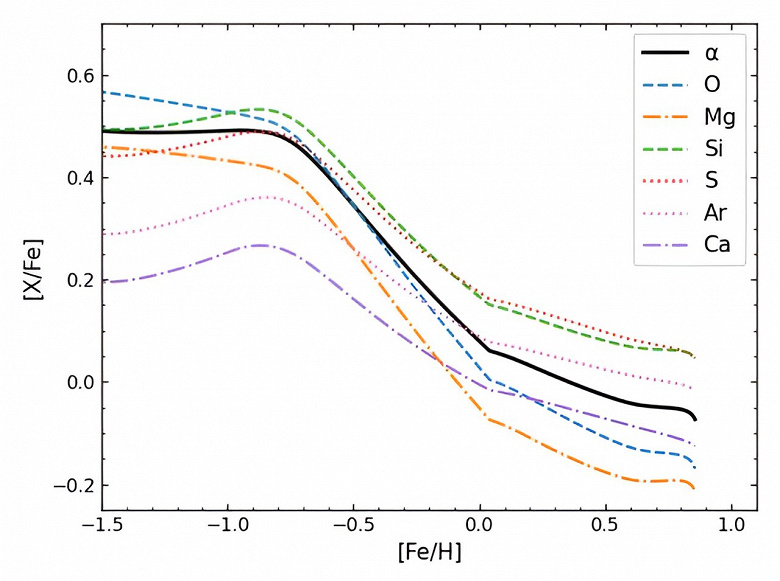Galactic archeology reveals the dramatic history of Andromeda. The formation of the galaxy was more intense than that of the Milky Way, with several periods of intense star formation caused by galactic collisions
A study led by scientists from the University of Hertfordshire has revealed the dramatic history of Andromeda, our closest neighboring galaxy. An international team of astrophysicists has determined details of the galaxy’s history through galactic archaeology, an approach that studies the chemical composition of stars and the development of their host galaxy to reconstruct its past.
Scientists examined the elemental composition of Andromeda, and the gas and dust content of planetary nebulae formed from the discarded outer layers of dying low-mass stars.

The analysis showed that the formation of Andromeda was more dramatic and powerful than the formation of our Galaxy. After the intense burst of star formation at the time of the galaxy’s creation between 2 and 4.5 billion years ago, another burst occurred, most likely caused by the so-called “wet merger” – the merger of two gas-rich galaxies that provokes intense star formation.
Andromeda’s history turns out to be more dramatic than that of the Milky Way
Scientists, based on the position and movement of individual stars within the galaxy, have long assumed that Andromeda was formed by the merger of two galaxies. Professor Kobayashi’s research sheds light on the nature and consequences of such a merger using the chemical composition of stars and explains how stars and elements formed throughout Andromeda’s history.

Professor of Astrophysics Kobayashi, from the Center for Astrophysics Research at the University of Hertfordshire, said: “This is a fantastic example of how galactic archeology can provide new insights into the history of the universe. By analyzing the chemical enrichment of different generations of stars in Andromeda, we can bring its history to life and better understand its origins.”
Professor Kobayashi’s theoretical model predicts two different compositions of stars in the two components of Andromeda’s disk. One composition contains ten times more oxygen than iron, and the other contains approximately equal amounts of oxygen and iron. These simulations are supported by spectroscopic observations of planetary nebulae and observations of red giants by the James Webb Space Telescope (JWST).
The new study continues Professor Kobayashi’s work on the origin of elements in the Universe. As he explains: “Oxygen is one of the so-called alpha elements created by massive stars. Other alpha elements include neon, magnesium, silicon, sulfur, argon, and calcium. Oxygen and argon have been measured using observations of planetary nebulae, but Andromeda is so distant that measuring other elements, including iron, will require JWST.”
In the coming years, JWST and large ground-based telescopes will continue to observe Andromeda, confirming new results.




